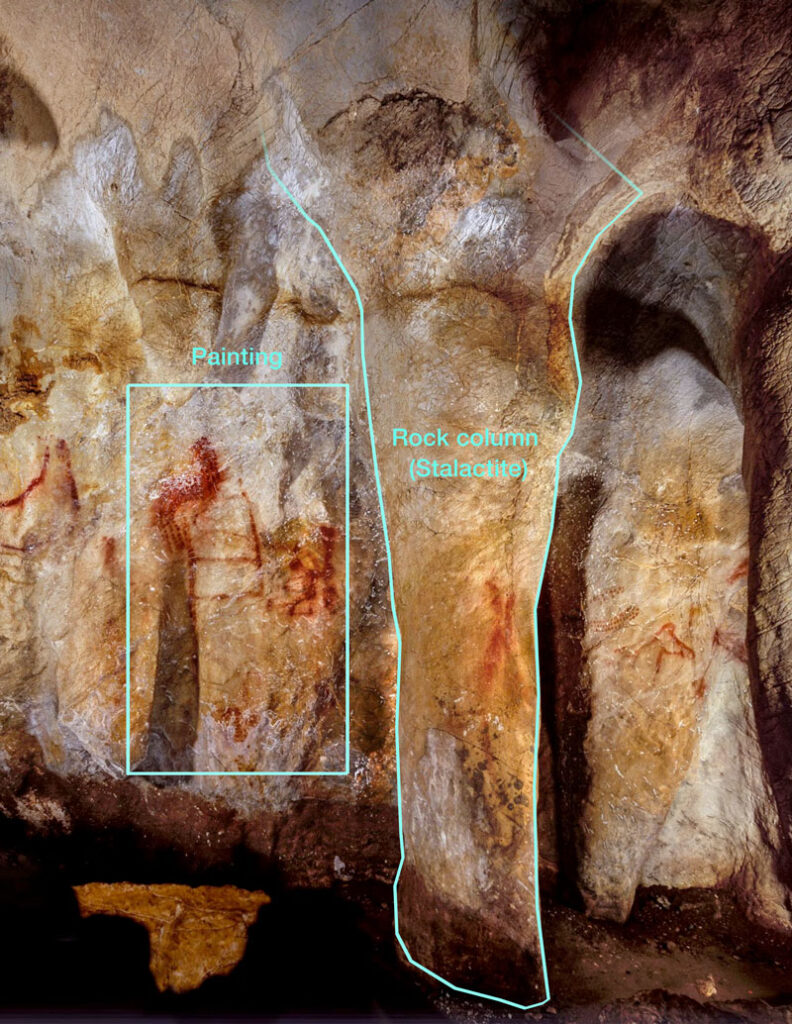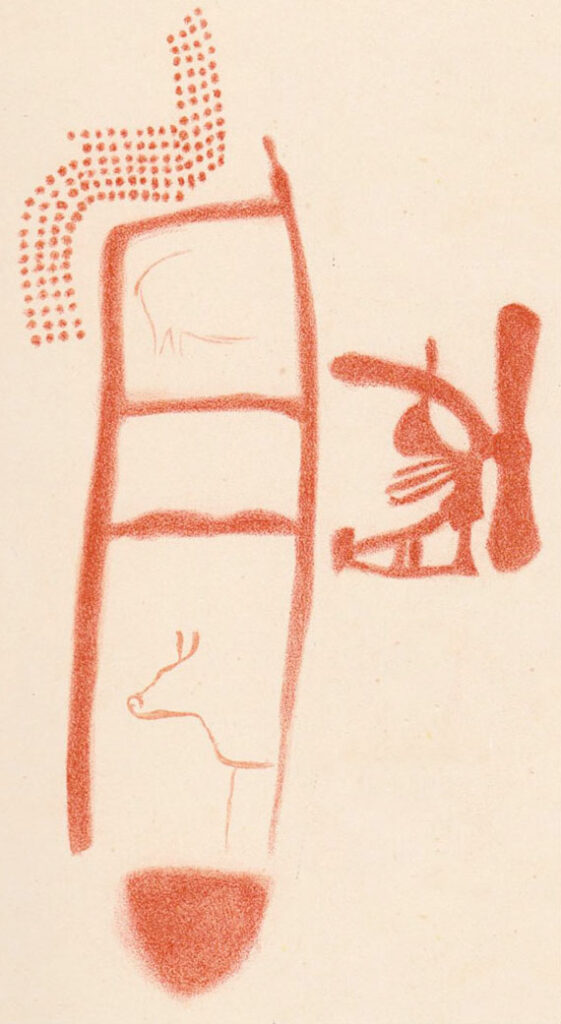27 Dec Neanderthal Art
What makes us human?
Fundamentally, symbolic behaviours like language, art, and morality make us human. Homo sapiens have demonstrated this capacity for at least 80,000 years. However, Neanderthals, a distinct species of Homo sapiens, were thought to lack these traits to some degree.
But a recent discovery of a 64,800-year-old cave painting in La Pasiega, Northern Spain, has changed this view. The age of cave art was determined using a new technique called uranium-thorium dating. Its age predates the arrival of modern humans in Europe, so it is thought to be from Neanderthals.

Its linear motif, animal forms, and dots demonstrate a higher level of thought not usually associated with Neanderthals.
As artists, we express ideas through imagery and emotion—an intuition of aesthetics fueled by culture. I can feel the artist’s intention here, but having only a basic understanding of Neanderthal culture will skew any reading of the image.
The photo is of the cave at La Pasiega; the illustration, below it was done by an archeologist in 1913.
Reading the Image:
Before delving into the art’s graphical nature, one important thing is the painting’s location in the cave; as it was away from any natural light source, a fire must have struck during its creation. This signifies that the site had significant meaning. Part of that meaning may have come from a prominent column of rock, a stalagmite connecting the ceiling and floor in the cave. This could have been symbolic.

What does this painting mean?
As an artist, I can apply my aesthetic intuition to the graphic, but what I lack is a good cultural context. I can only imagine what was important to Neanderthals 64,000 years ago through how they’ve been depicted in the modern age.
Ladder:
- Firstly, the segmented ‘ladder’ structure is the most conspicuous feature. Its squared-off forms suggest an intellectual division of ideas. These could be plots of land or the boundaries of an area, but its vertical stacking suggests a hierarchy.
- The lower cell demonstrates the emergence of an animal. Like an animal peering from a darkened cave. Or perhaps of a birth, a coming into the world. Being that it is on the lower tier, this suggests a beginning, symbolically of life.
- A Neanderthal’s very survival hinges on products from animals, so the inclusion of its form demonstrates reverence of the animal.
- The uppermost tier shows the back end of an animal, perhaps denoting death. Also, with its body incomplete, this could show that its death was caused by harvesting.
Human-like Figure:
- Outside the ladder, the figure to the right sits along the middle tier. This could show that the human does not share the animal’s life cycle but lives alongside it and perhaps has intervened at that point. The human-like form shows a complexity of adornments, perhaps denoting tools and clothing, resources taken from the animal.
- The interconnecting lines attached to the human form show a strong vertical column on its right side. This could be a visual representation of the rock column in the cave, symbolic of ascension, of a spiritual path, connecting ground to sky, much like the ladder of life.
- The human form has three arms, perhaps a poetic inference showing an intervention in the three stages of the animal’s existence: birth, growth (harvest), and death.
- Also, there is an arched line connected to the human form, stretching out, connecting Tier-1 to Tier-3, perhaps a symbol of the action of harvesting the animal, bringing its death, bringing it to Tier-3.
Flow of Dots:
- The dots near the top of the ladder are meant as a spiritual expression. The Neanderthal would’ve been exposed to rain, snow, and stars at night. These would’ve been seen as points that flow in and out of the sky, evoking wonder about the great beyond that sits vastly overhead.
- The dots flow not only directly off the top of the ladder but also around and outside it. This is the realm the human-like form occupies. This could be an acknowledgement of personal death and how his life is integrated with the animal’s, expressing respect for the animal and the purpose it has served in his life.
Other Details:
- At the top of the segmented ladder, a small single line points up on the right side. The Human-like form has a similar line pointing up from its head, perhaps symbolizing ascension into the ‘spirit world’.
~CJ~

